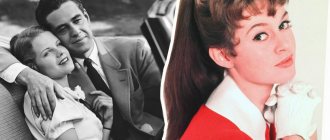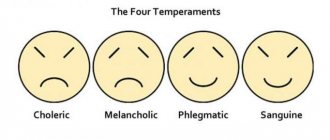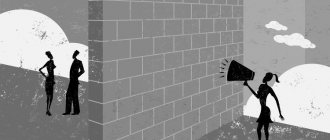Definition
Perceptual assessment received experimental attention as early as 1899, when people were asked to rate foods by weight. The second time, the weight seemed heavier than what the initial data showed. The illusion was caused by the expectation of a person who concentrated on the result.
When trying again, the expectations were explicit, and the person could already calculate the strength to lift a certain weight. The same experiment was conducted by R. Muller, who asked people to estimate the weight of a small and large box that had identical mass.
As a result, psychologists came up with the concept of illusion. This is false or distorted data that is perceived by the subject due to sensations or personal perceptions that are not valid.
Müller introduced the relative concept of such phenomena in his Würzburg school of psychology. Initially, experiments were carried out with a horizontal straight line. He put up 2 straight lines, at the end of the first of which there were branches. It seemed longer than the other. A I.
Rock from the European school of psychology at the beginning of the 20th century. suggested that illusion is anomalous phenomena: mirages, visual distortions and more. The opinions of psychologists from the Gestalt school clearly fit this description.
Perceptual illusions in psychology are the result of an effect that has a longer lasting effect on the human psyche. Representatives of Layer's theory came to this definition.
He worked with people who had an olfactory illusion:
- Any smell evoked contradictory associations that reminded the subjects of negative memories.
- The olfactory structure was disrupted due to poor functioning of the receptors in the nose.
- The olfactory fatigue effect is a new definition that has been confirmed by the loss of the sense of smell. At first, the pungent smell seems unbearable, but then a person gets used to it.
- Disguise is an attempt to create the illusion of deception. This concept was introduced before the experiment by Muller.
As a result, psychotherapists of different schools identified the basic principles of the appearance of illusory perceptions in humans, designating each category of feelings with special characteristics.
Stonehenge
The history of the giant stones located in Stonehenge (England) is very interesting; they have an amazing ability to create sound illusions that are not mirages of an acoustic nature. The discovery and justification of this phenomenon belongs to the American researcher Stephen Waller, an archaeoacoustic scientist who conducted research on the acoustics of the famous architectural ensemble, built in Southern England more than 5,000 years ago.
If two musicians play a trumpet while standing in the center of this structure, an amazing sound effect occurs - in some places around the musicians the sounds of their playing are not audible, observers “hear” silence. Waller explains this by saying that sound waves bounce off the stones and absorb each other, resulting in a “magic circle” of complete silence around the musicians.
People invited by the researcher to conduct the experiment stood blindfolded in the center of this circle and listened to the playing of two trumpeters. Once in the “dead” sound zone, they stopped hearing sounds, and then said that they imagined an obstacle (in reality there was none) between them and the trumpeters.
Kinds
During the experiments, psychotherapists from various schools identified classifications and types based on the reactions of the subjects and the test conditions.
| Class of illusory experiences | |
| Stimuli-distorting illusions | The illusion of sensations occurs when the environment changes. A person feels an incentive on the way to his goal, but loses it when he perceives the road differently than he expected. |
| Auditory phenomena | The impression of sound, known as the Doppler effect, occurs against the backdrop of space-time situations. This means that a person hears a sound higher if its source moves away. The effect of the phenomenon was proven by scientist Christian Doppler. He forced people to listen to the sound of a whistle blown by a train driver. The further he became from the subject, the higher he seemed to them. This experiment was carried out in 1842, and at the same time physicists noted the factors that influence how people feel when the wind blows (from them or towards them). |
| Auditory illusion by Paul Thomas Young | In 1928, an American psychologist identified a class of illusions due to impaired hearing. The name was included in the classification of illusory perceptions. In his opinion, the process of sound localization affects the imagery of thinking. The psychologist installed 2 pipes towards each human ear. The sound waves were felt differently when the subject was in different surroundings. Some wave vibrations were perceived as impacts. The higher the frequency, the worse the person felt. Then such techniques were borrowed to develop torture of prisoners. |
| Optical illusions | |
| Optical phenomena | Numerous optical illusions are produced by the refraction (bending) of light as it passes through one substance to another. |
| Cheyenne/Fotolia | Rainbows are also the result of refraction. When the sun's rays pass through the rain, the drops split (refract) the white light into its component colors. When rays of white light from any source pass through a prism, they are refracted, creating the appearance of a spectrum of colors, like a rainbow on a summer morning. Another illusion that depends on atmospheric conditions is a mirage, in which, for example, the vision of a body of water is created by light passing through layers of air above the heated surface of a highway. Nearby objects may even appear reflected in it. Under certain conditions, complex mirages that appear to be cities, forests, or unidentified flying objects may appear on the horizon. |
| Visual perceptual illusions | When an observer is confronted with a visual assortment of dots, the brain may group dots that “belong together.” These groupings are created based on things like observed similarity (e.g. red versus black dots), proximity, general direction of movement, perceptual set. |
| Closing the illusion | A term used in Gestalt psychology, it refers to the illusion of a process where an incomplete stimulus is seen as a whole. Thus, a person unconsciously strives to complete (close) a triangle or square that has a gap in one of its sides. |
| Sensory illusions | |
| Stimulation of the senses | Many sensory illusions can be described as consequences of overstimulation of the senses. Sensitivity can be measured as the perceived intensity (threshold or threshold) of a corresponding stimulus. The smallest detectable stimulus is called the absolute threshold, while the smallest detectable change in stimulus intensity is called the differential threshold. |
Some of these false impressions may arise due to factors beyond a person's control:
- the characteristic behavior of light waves that makes a pencil appear bent in a glass of water;
- due to inadequate information (as in poor lighting conditions);
- due to functional and structural characteristics of the sensory apparatus (eg, distortions in the shape of the lens in the eye).
Every sighted person experiences such visual illusions, and they are not mental disorders.
Learning by doing
Surely, everyone has seen the so-called illusions - landscape pictures in which you can see hidden silhouettes .
Or spirals that supposedly move when drawn on paper.
Sometimes it takes some effort to get the effect.
There are illusions-simulators , which should be observed with one eye. There are also pictures that you should focus on for a minute or two.
The simplest example is the Müller-Lyer illusion. The drawing represents the depicted lines, which at first glance have different lengths. But it seems to the viewer that the stripes are by no means equal. Finding the answer to a visual riddle is easy. It is enough to measure the lines with a ruler.
This phenomenon is easy to explain. One of the lines is outlined with an arrow, so it visually appears larger. And the other, accordingly, is shorter, since it ends with ends directed inward.
From the point of view of associations, these lines are subconsciously associated with arrows . An arrow equipped with a tail tip appears to most people to be longer than one framed with a sharp end.
This example fully corresponds to the concept of “illusion”. A person looks at a drawing, but the brain analyzes what it sees in its own way, distorting the idea of the existing picture.
Similar errors of perception happen in life.
The main problem of those experiencing them is false conclusions about the world around them.
The senses give a person an incorrect picture of reality , which can provoke problems in society.
Nature of occurrence
Perceptual illusions in psychology are special perceptual experiences in which information arising from "real" external stimuli leads to a misperception or false perception of the object or event from which the stimulation originates.
Another group of illusions arises due to misinterpretation, which is taken from adequate sensory signals. In such illusions, sense impressions contradict the “facts of reality” or do not report their “true” character.
In these cases, the perceiver makes an error when processing sensory information:
- The error occurs in the central nervous system (brain and spinal cord).
- This may be the result of competing sensory information, psychologically significant distorting influences, or previous expectations (mental set). For example, drivers who see their own headlights reflected in a store window may experience the illusion that another vehicle is approaching them, even though they know there is no road there.
- Intersensory effects - the senses combine to produce a common, unitary or integrated perception. In the dining room, for example, the visual array on the table, conversational tones or background music, and the tactile sensations, aromas, and tastes of food combine to enhance the sense of taste, and each sense contributes to this.
- Physiologically, taste and smell appear to be particularly susceptible to intersensory effects (interdependent). In other situations, vision, hearing, touch, and often smell and taste are used to identify an object or determine a location based on mutual perception.
- However, sometimes stimulation of one sense may activate an illusory sensation that would normally be perceived by another sense, or a strong sensation may mask the perception of other senses.
Synesthesia is the “crossing” of senses.
For example, "color hearing," in which people say that certain sounds cause them to actually perceive certain colors, is relatively common:
- Some musicians report that they see certain colors whenever they hear given tones and musical passages.
- Poets sometimes claim to hear sounds or musical tones when they see words, images, and colors.
- Synesthesia can be caused by drugs, and in rare mental disorders, patients may not be able to tell whether they are seeing or hearing.
In other situations, the nature of perceptual illusions determines the area where external factors were caused and felt.
Concept of perception
Definition 1
Perception is a reflection of the properties of objects and phenomena in the process of their impact on the senses.
Such a reflection is based on the past experience of the individual, his previously formed ideas and knowledge. The process of perception is inextricably linked with other psychological processes of the individual: thinking, speech, emotions, will. Thanks to thinking, a person becomes aware of the object of perception. Speech allows you to name the object of perception. Feelings reflect the attitude towards a perceived phenomenon. Thanks to the will, a person organizes the process of perception.
Functions and role
Typically, illusion was considered a special function of the brain that puts a person in danger. In 1965, the Soviet scientist R. Grokhov put forward the theory that the subconscious mind receives impulses from the outside in order to protect the body from danger. For example, the phenomenon of seeing something that is not there (déjà vu).
It is necessary so that the brain has a goal in conditions that are distant from those needed for a comfortable life. If you find out the nature of such phenomena, it seems as if the brain itself suggests that somewhere nearby there is “salvation” (hidden from the real eyes of the object that the brain is thinking about).
Intersensory facilitation and competition is the sole role of all illusions within the human body.
Stimulation through one sense can enhance the function of another:
- Watching a boat bob on the waves can induce a sense of balance in the observer on the pier to the point of causing seasickness.
- Pictures of an arctic scene of frost and snow can cause a sensation of cold or the shivers that goose meat causes.
- An explosion or gunshots may give the observer the illusion of an impact.
- Pictures of appetizing food can evoke sensations of taste and smell.
These situations are a consequence of the body's protective function. As long as a person observes, he is a supporter of the situation. As soon as he begins to empathize and sympathize, he experiences the same emotions that a real “sufferer” feels.
In order not to let negative emotions pass through itself “in vain,” the body triggers a reaction of imaginary desire. That is, if a person is not hungry, he may look at food and desire it in spite of his diet or lifestyle. In order not to irritate the neuron cells, a feeling of hunger is triggered. This is necessary so that a person stops tormenting himself with the illusion of hunger.
After eating, a non-hungry person feels full, and any food will no longer be an irritant. The same thing happens with visual illusions. When viewing a constantly rocking object (a boat), the body takes on the role of the object.
Accordingly, the vestibular apparatus, although at rest, senses those visible shocks. As a result, the brain sends an impulse to the external points of the neurons to warn the person of danger - when the movement begins, balance may be disturbed. The body experiences real emotions while remaining calm.
Perceptual illusions in psychology are also closely related to organoleptic rivalry, in which one stimulus inhibits the perception of another. As a result, signal conflict may be detected if sensory information is ambiguous or contradictory. The same phenomenon is observed in the room tilt experiment.
During the experiment, visual conflicts of senses with signals from the sense of balance were observed. Conditions of pain, panic, monotony or fatigue can create conditions in which different feelings are masked or suppress each other.
- For example, a witness to a terrifying sight may forget about all sounds.
- Distraction can also increase your pain threshold.
- As in the case of wounded soldiers, whose wounds become painful only after the stress of combat has subsided (shock state). Although people lose consciousness in painful shock, this is a protective reaction of the body, which is not ready to endure severe stress, but wants to be saved.
- Likewise, some dentists have used auditory analgesia (masking pain with sound).
Illusions of psychiatric significance are called pseudohallucinations, and they occur when feelings of anxiety or fear are projected onto external objects. For example, when a child sees threatening faces or monsters in the shadows at night. A soldier troubled by apprehension may fearfully perceive inanimate objects as an attacking enemy.
In literature, the character Don Quixote perceived windmills as enemy knights. Patients in psychiatric clinics perceive people as machines, teddy bears and devils. Such illusions are considered deviations and require treatment.
Sound illusions for mentally ill people
Sound illusions for mentally ill people have completely different origins and explanations. As a rule, sound illusions take the form of screams, voices and swearing, suspicious (for the patient) whispers, gunshots and entire cannonades, singing, and orchestral music. Sometimes a patient, in an unclear extraneous noise, can “hear” separate conversations in which different people take part, sometimes he “recognizes” these voices, sometimes he hears the speech of strangers. These sound illusions are “invented” by the sick consciousness, passing off completely extraneous sound stimuli as distinct speech.
As in other cases of manifestations of illusions of various types, doctors try to separate sound illusions from auditory hallucinations. In the first case, there is an imaginary erroneous perception by the patient of extraneous noises, and in the second - invented imaginary sounds. In both cases, there is a unifying phenomenon - all “conversations” are, as a rule, accusatory and condemning of the sick person.
Rarely, a phenomenon occurs in which sound illusions calm the patient and persuade him to calm down. Usually, sound illusions are intensified in a noisy environment, when a large amount of sound and noise provokes the sick person's consciousness to “hear” conversations. In cases of incorrect perception of sounds, the effect of sound illusion occurs.
Popular myths
HummingbirdOrgan therapyOpening a businessVision and computerMenstruations
Popular facts
The most famous philosophersThe most famous politiciansThe most famous cigarettesThe most important discoveries of mankindThe most famous gods of death
Popular tips
100 things to do in life Why a book is better than a movie How to save a marriage (for men) How to get your boyfriend back Facebook secrets
Forms of manifestations and physiology
Perceptual illusions are assessed according to the following criteria:
- The volume of illusions. The human ear can typically distinguish about 1,500 pitch levels. Regarding loudness, threshold differential studies show about 325 individually perceived levels in the region of greatest auditory sensitivity (1000 to 4000 cycles per second).
- For humans, the number of distinguishable tones is in the hundreds of thousands. However, when 2 sounds are heard in succession, the intensity or loudness of the 2nd is judged by comparing it with the 1st.
- Thus, a noise may sound louder than a whisper, and a "deafening" noise may cancel out all other sounds.
The steady boom that precedes an earthquake can drown out all audible sounds. This is why some people hear “silence” before a natural disaster.
It is worth mentioning separately about tactile illusions. The skin contains many "spots" that selectively react to either cold or heat. However, it may be that a very warm stimulus will produce a cold sensation if placed in a location that responds to cold.
This phenomenon can be compared to testing recently boiled water, which at first seems very cold and then hot. Thus, when a warm stimulus is perceived as cold, the illusion is called paradoxical cold.
Paradoxical heat, a less common experience resulting from the simultaneous stimulation of warm and cold spots. The sensation is sometimes called psychological heat.
The phenomenon of déjà vu is a feeling in which a past episode is repeated in the present. In fact, it is a merging of past and present, which results in the illusion of repeated experiences. A person re-experiences some experience under similar circumstances, and the brain projects the past situation onto current life events. This can be called a "hallucination" of the primary experience.
Theorists interpret experience as an event based on the reactivation of old memory traces. They rely on stimuli that resemble emotions experienced in the past.
Perceptual illusions were described by Louis Jolyon West, who noted that in psychology this event is associated with emotions, associations and strong expectations. Everything taken together often causes illusory delusions in everyday life.
In modern practice, there is the concept of substitution or cancellation:
- When a person expects to see someone, he may mistake the stranger for the object of his search.
- When trying to remember a song, a different chord comes to mind, similar to the desired composition.
Physiology in this case produces factor-stimulating events that help to remember incidents in life associated with episodes of specific actions.
Placebo and nocebo
A placebo is the focus of our perception, when you eat a piece of chalk in the form of a pill, thinking that it is a super-powerful medicine, and you actually get better. Experiments by scientists confirm the high effectiveness of this effect. And believe me, grandmother healers very successfully used this “discovery” even before it was recognized as official.
Nocebo - on the contrary, when you see a cross or a needle with a black thread drawn on the door, you can bring yourself to a serious state, imagining that you have been damaged. Our subconscious remembers sensations and associates them with a definition. Let’s say the symptoms are dizziness, heaviness in the abdomen, a regurgitation reaction, which means that as a consequence the definition is derived - poisoning. The same goes for the opposite: if you convince a person that he is poisoned, he will show all these symptoms. There is a widely known case in psychiatric practice where a healthy woman died of imaginary AIDS after reading the relevant literature.
Having caught on to one minor symptom, thanks to her high suspiciousness, she provoked all the others intrapsychically, stopped going out, leading an active lifestyle, which led to a deterioration in her health, and then - progressively. Analgesia (suppression of pain while maintaining sensations in the body) and anesthesia (maximum reduction in body sensitivity) are based on the same mechanism of suggestion.
Psychological theories and schools
The Gestalt school's "trace extinction" theory proposes that a physical trace (in the form of temporarily excited nerve cells) of the original stimulus remains in the brain even after that stimulus ceases. This trace influences the evaluation of the subsequent stimulus.
The strength of the mark, also called aftereffect, and the rate at which it disappears vary greatly in individual cases. People who are field dependent may express weaker traces of aftereffects.
The syllogism school interprets the concept of illusion. Köhler believed that human intelligence influences perceptual understanding.
The monkey used this as an example:
- She used a stick to get the banana.
- A stick in a horizontal position was considered an extension of the hand.
- To obtain food, the interpretation of this perception helped the monkey obtain the desired result.
Thus, the means to achieve the goal is always interpreted by the illusion of perception, as an object taken for something else thanks to the developed intellect.
Duncker, from the school of intellectual restructuring, studied the attitude towards sudden understandings. Illusion, in his opinion, was associated with associationist empiricism.
Any experience a person gains during his life can play a cruel joke on him:
- The structure of the actual field changes in an already established organization.
- Changes can arise due to changes in the structure of objects, rather than the environment.
- If a person with experience argues like a beginner, the structure will not accept his judgment.
Thus, the illusion of readiness in the principles of information perception can influence the opponent’s decision. Therefore, in many situations, an illusory picture of consequences is presented as a fact that has already happened.
Cognitive (psychological) illusions
This type of illusion is based on patterns and thinking errors, which often occur with the participation of the contagion effect (we talked about it once), and sometimes play an adaptive function - a person does not have to think, weigh and make decisions for a long time, everything happens quickly and automatically : glitch and it's done. And sometimes an analogy works - if a particular behavior was effective under one condition, then the victim of illusions believes that it will be the same under others. And it seems that none of us are immune from this. So, what are cognitive illusions?
Behavioral
- The craze effect is a herd effect, you already know about it.
- Confirmation bias - all facts are interpreted in such a way as to confirm a previously held opinion (“all men are assholes!”, and attention is drawn specifically to this type of men).
- The contribution effect - a person wants to sell something more expensive than he himself is willing to pay for the same product.
- Overestimating the impact - “Oh, I definitely won’t survive this exam!”
The principle “Fear has big eyes”: it’s not the exam itself that scares you, but the unknown that awaits ahead - even if you knew in advance that the exam would end in failure, the level of fear would be many times lower. Therefore, psychologists recommend that before some “unknown terrible” event, play out all possible options in advance (by the way, great commanders did not disdain this method).
- Familiarity effect - a person expresses unreasonable favor towards another just because he knows him. Who would have thought that this was an illusion?










